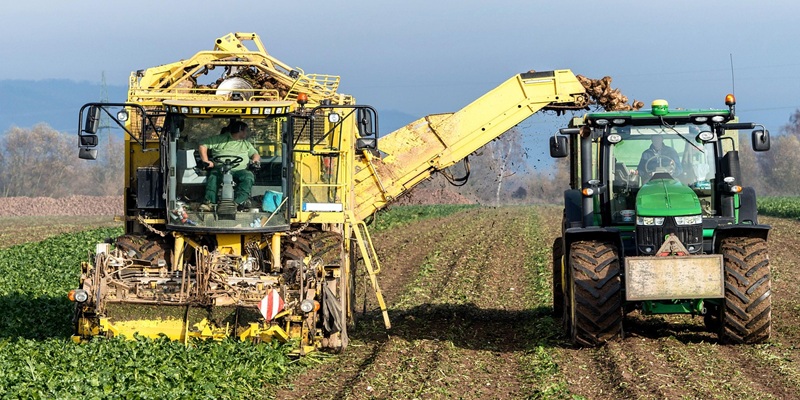Farming has always been the backbone of human civilization, providing food and resources essential for survival. However, traditional farming methods were labor-intensive and time-consuming. The invention of the mechanical reaper revolutionized agriculture, making harvesting faster, more efficient, and less reliant on manual labor. This groundbreaking innovation not only transformed farming techniques but also paved the way for modern agricultural machinery.
The Origins of the Mechanical Reaper
Before the mechanical reaper, farmers relied on sickles and scythes to harvest crops. This process was slow, exhausting, and required many workers. As populations grew, the demand for food increased, creating a need for more efficient harvesting methods.
The first successful mechanical reaper was invented by Cyrus McCormick in 1831. His design used a horse-drawn system with a rotating blade to cut grain, which was then collected onto a platform. This invention drastically reduced the time and effort needed for harvesting.
Early Challenges and Improvements
Initially, farmers were skeptical about the mechanical reaper. Many doubted its efficiency compared to traditional methods. However, McCormick’s persistence paid off. He made several improvements, such as adding a raking mechanism to bundle the cut grain, making the process even smoother.
By the 1850s, McCormick’s reaper was widely adopted in the United States and Europe. It became a crucial tool during the agricultural boom, helping farmers meet the growing food demands of industrialization.
How the Mechanical Reaper Works
The mechanical reaper operates on simple yet effective principles. Understanding its mechanism helps us appreciate its impact on farming.
Key Components of the Reaper
- Cutting Blade – A sharp, reciprocating blade slices through crops at the base.
- Reel or Platform – The cut grain is guided onto a platform for easy collection.
- Horse-Drawn Mechanism – Early models used horses to pull the reaper across fields.
- Raking System – Later versions included a rake to bundle the grain, reducing manual labor.
The Harvesting Process
When the reaper moves through a field, the blade cuts the stalks while the reel gathers them onto the platform. Workers then collect the cut grain, either manually or with the help of an automated bundling system. This process was significantly faster than hand-cutting, allowing farmers to harvest larger areas in less time.
The Impact of the Mechanical Reaper on Agriculture
The introduction of the mechanical reaper brought profound changes to farming. It influenced labor, productivity, and even migration patterns.
Increased Farming Efficiency
Before the reaper, harvesting a single acre of wheat could take an entire day. With the mechanical reaper, the same task was completed in just a few hours. This efficiency allowed farmers to cultivate larger fields, boosting food production.
Reduced Labor Dependency
Traditionally, harvesting required many workers, often leading to labor shortages during peak seasons. The reaper reduced the need for manual labor, freeing up workers for other tasks. This shift also contributed to urbanization, as fewer farmhands were needed in rural areas.
Economic Growth and Expansion
The mechanical reaper played a key role in the agricultural revolution. It enabled farmers to produce surplus crops, which could be sold in markets. This economic boost supported the growth of towns and industries. Additionally, the reaper made large-scale farming viable, encouraging westward expansion in the U.S.
The Mechanical Reaper vs. Modern Harvesting Machines
While the mechanical reaper was revolutionary, modern farming has seen even more advanced machinery. However, the principles behind the reaper laid the foundation for today’s equipment.
From Reapers to Combine Harvesters
The mechanical reaper evolved into the combine harvester, which not only cuts but also threshes and cleans grain in a single process. This innovation further reduced labor and increased efficiency.
Technological Advancements
Modern harvesters use GPS, automated steering, and AI-powered sensors to optimize harvesting. Despite these advancements, the core idea—mechanizing the cutting and collection of crops—stems from the original reaper design.
Why the Mechanical Reaper Still Matters Today
Even with modern technology, the mechanical reaper remains a landmark invention. Here’s why it’s still relevant:
A Symbol of Agricultural Innovation
The reaper marked the beginning of mechanized farming. It demonstrated how technology could solve labor challenges and improve productivity.
Influence on Future Machinery
Without the reaper, later inventions like tractors and combines might not have been developed as quickly. Its success encouraged further agricultural innovations.
Historical Significance
The mechanical reaper played a crucial role in shaping economies and societies. It helped sustain growing populations and supported industrial growth.
Conclusion
The mechanical reaper was more than just a farming tool—it was a game-changer that transformed agriculture. By reducing labor, increasing efficiency, and supporting economic growth, it set the stage for modern farming techniques. Today, as we use advanced machinery to feed billions, we owe part of that progress to early innovations like the mechanical reaper. Its legacy lives on in every combine harvester and automated farming system, proving that great inventions stand the test of time.
Whether you’re a farmer, historian, or tech enthusiast, the story of the mechanical reaper is a reminder of how innovation can revolutionize an entire industry. And as agriculture continues to evolve, the lessons from this groundbreaking invention remain as valuable as ever.



































